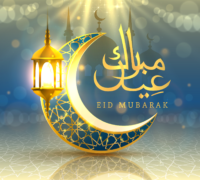The significance of Christians celebrating Easter and Muslims observing Ramadan after periods of fasting or prayers, specifically for 40 days, holds deep spiritual and symbolic meaning in each respective faith.

- Christianity (Easter):
- Easter is the most significant festival in Christianity, commemorating the resurrection of Jesus Christ from the dead. The period leading up to Easter is called Lent, which lasts for 40 days (excluding Sundays), mirroring the 40 days Jesus spent fasting in the wilderness before beginning his public ministry.
- Lent is a time of penance, reflection, and preparation for the celebration of Easter. Christians often undertake fasting, repentance, and acts of charity during this period to spiritually prepare themselves.
- The number 40 has biblical significance in Christianity, representing a period of testing, trial, or preparation. For example, Moses spent 40 days on Mount Sinai receiving the Ten Commandments, and the Israelites wandered in the wilderness for 40 years.

- Islam (Ramadan):
- Ramadan is the ninth month of the Islamic lunar calendar and is considered the holiest month for Muslims. It is a time of fasting, prayer, reflection, and community for Muslims worldwide.
- The fast of Ramadan lasts for 29 or 30 days, depending on the sighting of the moon, during which Muslims abstain from food, drink, smoking, and other physical needs from dawn until sunset.
- The significance of fasting during Ramadan is multifaceted. It serves as a means of spiritual purification, self-discipline, empathy for the less fortunate, and increased devotion to God. It also commemorates the month when the Quran, the holy book of Islam, was first revealed to the Prophet Muhammad.
- The number 40 also has significance in Islamic tradition. For instance, it is said that Prophet Muhammad received his first revelation from the angel Gabriel in a cave on Mount Hira, near Mecca, after meditating there for 40 days.
In both traditions, the period of fasting and prayer serves as a time of spiritual renewal, self-discipline, and heightened devotion to God. The specific duration of 40 days or a month in each case carries deep symbolic significance rooted in the respective religious narratives and teachings.







